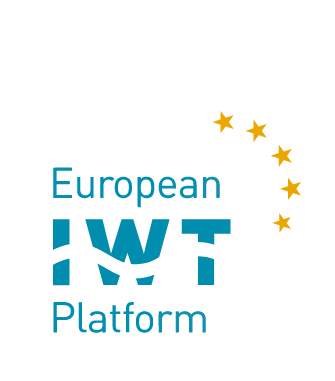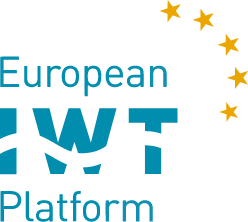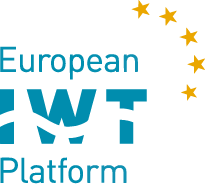
The Committees
Their vision, mission and objectives
Here you can find the respective Committees. You will be guided to their respective vision, mission and overall objectives.
A truly integrated transport system for sustainable and efficient transport of people and freight is based on an open system of assets, resources and services operated by individual companies. All is fully visible and accessible and as such creates a network of networks. Coordination should be in a manner that is economically, environmentally and socially efficient , secure and sustainable. The system, of which all transportmodes are part, will be based on physical, digital and operational connectivity. This vision is meanwhile carried by policymakers, opinionmakers and the industry. Why should IWT not share this vision and move in that direction !?
I&G ’s mission is to follow closely and stimulate actively all relevant initiatives that one way or another bring us closer to this integrated transport system.
First objective is the implementation or integration of innovative solutions that contribute to the continuous improvement of Inland Waterway Transport as such and to make it a more attractive and greener transportmode than it already is.
Second objective is to demonstrate that Inland Navigation is at the forefront of this evolution towards the Integrated Transportsystem.
The Committee’s vision is that IWT’s reputation as safest and highly environmental friendly transport mode will set an admired and reference standard in the world. It is ENV&SAFETY´s mission to be pro-actively involved in the work regarding the Agreement on the Carriage of dangerous goods and on the Convention on the collection, deposit and reception of waste on inland waterways: ADN + CDNI.
The objectives of the ENV&SAFETY are to influence the processes of adaption of legislation and to cooperate on a pro active way, representing the barge owners concerns and consists of participation in the meetings , and in working groups of the UNECE´s Safety Committee and in the CCNR´s bodies working on the waste treaty, lobby at different levels of stakeholders and contact with governmental organisations.
In order to keep IWT both attractive and competitive as a transport mode, it will take a modern and flexible crewing system that perfectly balances the needs of crews in terms of trainings and social security, the safety of shipping and the attractiveness of the profession.
The committee’s mission is to take responsibility for all matters relating to personnel, crews, crew regulations, labour and social legislation, social security systems, employment contracts, training, professional qualifications and labour market.
The objective is to further develop the training standards, comparability of training and free movement of workers and reducing shortage of personnel. Equally important is to ensure social security for workers on board and preventing unfair competition based on low social standards. Last but not least, the S&E Committee aims at strengthening the position of IWT operators as employers, ensuring their rights, avoiding unnecessary administrative burdens and working towards maintaining a clear distinction between manning regulation on the one hand and labour law on the other.
We do this by participating in the relevant meetings of the EU, CCNR, CESNI/QP and sub-working groups and the Social Dialogue and its sub-working groups, bringing in the views of the industry, making our own suggestions and providing expertise. We maintain intensive contact with our social partners (ETF) , develop common positions as far as possible and take our own positions where necessary.
NTC’s vision is that IWT has to have a maximum of focus on regulations that are necessary for innovation as well as on regulations that could potentially impact the existing fleet of vessels. At the same time Police regulations should not be neglected, since these guarantee a higher safety level.
It is NTC’s mission to be pro-actively involved in the work that is centered around the European Standard of Technical Requirements for Inland Navigation vessels: ES-TRIN.
The objectives of the NTC mainly concerns participation in the meetings of the European Committee that draws up standards in the field of inland navigation (CESNI) and participation in the European working group on technical requirements (CESNI/PT).
Inland Navigation can only function at its best when there is infrastructure – existing or new – that is navigable at all times, properly maintained, fit to be used by existing and future fleets and matches with transportation needs. In return IWT should constantly cooperate with Infrastructure Management (Waterway Managers) in matters that safeguard the environment (water quality, fauna, habitat, etc.).
Based on this vision, the Committee will further push the TEN-T Corridors for allowing an increased and more cost effective integration of IWT in the complete transport system and in that sense reach a higher modal shift while not forgetting matters like Water Framework Directive and alike.
The goal should be a consistent network, meeting the Good Navigation Status by 2030, minimum water depth and free air-drafts requirements as set in the guidelines. Furthermore, there should be have a open digital network on international supported communication between all parties involved in IWT, including the waterway managers, the shippers and the barge owners/ operators. Free of barriers, free of bureaucratic burden in one Europe. The infrastructure should be prepared where possible to be fit for future, taking climate changes into consideration both in flood and drought situations.
Ports and terminals should be positioned that a multimodal shift can take place where needed and/ or required.
Lastly. the infrastructure shall meet the requirements of social aspects of the barge operators, its crews and maintenance people, accessible with berthing, car droppings, safe anchor places and means to connect to the “land” for their needs to socialize, rest and exchange crewmembers.

The Organization
IWT is managed by a Board of Directors consisting of 3 Directors appointed by EBU and 3 Directors appointed by ESO. Additionally , the respective Secretary Generals of the founding associations are appointed as Executive Directors of IWT.




